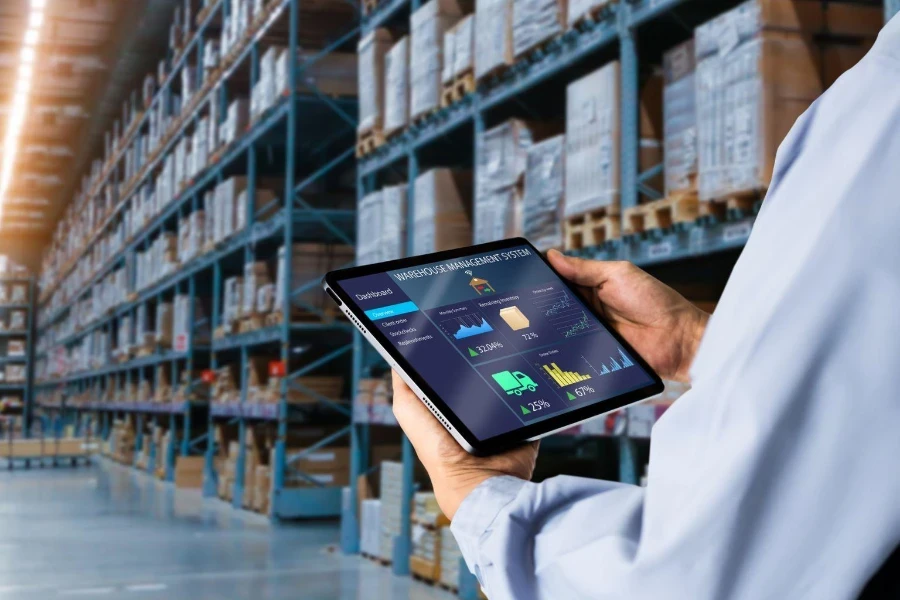Supply Chain Management (SCM) stands as a critical component in the seamless operation of businesses worldwide. This intricate process involves the meticulous management of the flow of goods and services, encompassing everything from raw material sourcing to the final delivery to consumers. In an era where efficiency and speed are paramount, understanding SCM is more than just a necessity—it’s a competitive advantage. This article aims to demystify SCM, breaking down its complexities into understandable segments, and providing you with actionable insights to leverage in your business operations.
Table of Contents:
– What is SCM and why is it important?
– Key components of an effective SCM system
– Challenges in SCM and how to overcome them
– The impact of technology on SCM
– Future trends in SCM
What is SCM and why is it important?

Supply Chain Management, or SCM, is the backbone of the global economy, ensuring the smooth operation of supply chains in various industries. At its core, SCM is about creating value – optimizing operations to deliver products and services efficiently, cost-effectively, and on time. It’s a complex orchestration of procurement, manufacturing, distribution, and logistics processes. The importance of SCM cannot be overstated; it directly impacts a company’s bottom line by minimizing waste, reducing costs, and improving customer satisfaction.
In today’s globalized economy, businesses are not just competing with their local counterparts but with companies across the world. This has elevated the importance of SCM, making it a critical factor for businesses looking to maintain a competitive edge. Effective SCM allows companies to respond swiftly to market changes, manage risks better, and create a more resilient supply chain.
Moreover, SCM plays a pivotal role in sustainability efforts. By optimizing supply chain processes, companies can reduce their environmental footprint, ensuring a more sustainable approach to business that resonates with today’s eco-conscious consumers.
Key components of an effective SCM system

An effective SCM system is built on several key components, each playing a crucial role in the smooth operation of the supply chain. First and foremost is procurement, the process of sourcing raw materials and services needed for production. This step is critical for ensuring the quality and cost-effectiveness of the final product.
Next is manufacturing, where raw materials are transformed into finished goods. This stage requires meticulous planning and coordination to ensure efficiency and minimize waste. Distribution follows, involving the storage and transportation of goods to their final destination. This component is vital for meeting customer demands and maintaining high satisfaction levels.
Lastly, customer relationship management (CRM) is an essential part of SCM, focusing on understanding and meeting the needs of the end consumer. This involves gathering customer feedback, managing returns and exchanges, and ensuring a positive overall customer experience. Together, these components form the foundation of an effective SCM system, enabling businesses to operate smoothly and efficiently.
Challenges in SCM and how to overcome them

Despite its importance, managing a supply chain is fraught with challenges. These range from external factors like fluctuating market demands and geopolitical tensions to internal issues such as miscommunication between departments and inventory mismanagement. One of the most significant challenges is the need for real-time visibility across the supply chain, which is crucial for making informed decisions and responding to changes swiftly.
To overcome these challenges, businesses must invest in technology and innovation. Solutions like SCM software provide real-time data and analytics, enabling better decision-making and increased agility. Additionally, fostering strong relationships with suppliers and implementing a robust risk management strategy can help mitigate external risks.
Another effective strategy is to adopt a customer-centric approach, focusing on understanding and anticipating customer needs. This not only improves customer satisfaction but also provides valuable insights that can help streamline operations and reduce waste.
The impact of technology on SCM

Technology has revolutionized SCM, offering unprecedented visibility, efficiency, and agility. Innovations such as the Internet of Things (IoT), artificial intelligence (AI), and blockchain are transforming traditional supply chains, enabling businesses to track products in real-time, predict market changes, and ensure transparency throughout the supply chain.
IoT devices, for example, can monitor the condition of goods in transit, ensuring they are stored and transported under optimal conditions. AI, on the other hand, can analyze vast amounts of data to predict demand more accurately, optimize inventory levels, and identify potential bottlenecks before they cause disruptions.
Blockchain technology offers a secure and transparent way to track the movement of goods, reducing the risk of fraud and ensuring compliance with regulatory requirements. Together, these technologies are creating more resilient, efficient, and sustainable supply chains, capable of meeting the demands of the modern market.
Future trends in SCM

As we look to the future, several trends are set to shape the evolution of SCM. Sustainability will continue to be a major focus, with companies increasingly adopting green supply chain practices to reduce their environmental impact. This includes everything from optimizing routes to reduce carbon emissions to using sustainable materials in packaging.
Another trend is the shift towards more localized supply chains, a response to the vulnerabilities exposed by the global pandemic. This approach not only reduces dependency on distant suppliers but also allows for greater flexibility and faster response to market changes.
Finally, the integration of advanced technologies will continue to drive innovation in SCM. From AI-driven demand forecasting to blockchain-enabled traceability, these technologies will further enhance the efficiency, transparency, and resilience of supply chains, ensuring they can meet the challenges of the future.
Conclusion:
SCM is a critical, yet complex, component of modern business operations. By understanding its importance, key components, and the challenges it faces, businesses can leverage SCM to improve efficiency, reduce costs, and enhance customer satisfaction. With the ongoing advancements in technology and a growing focus on sustainability, the future of SCM looks promising, offering new opportunities for businesses to innovate and compete in the global market.




